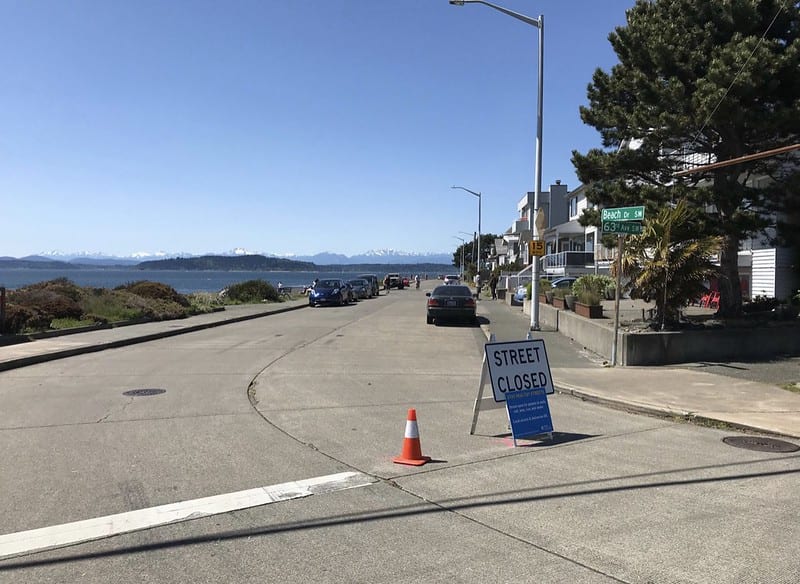 Photo Credit: Jakob Owens on Unsplash
Photo Credit: Jakob Owens on Unsplash October – and actually, the past six months! – was all about creative ways to use streets. Think Stay Healthy Streets, Stay Healthy Blocks, Keep Moving Streets, Trick or Street Blocks, extended Street Use permits, and more. With that said – the differences between these different uses and permits can get a little unclear.
In this month’s SDOT Best of the Month, we’ll highlight the differences between them and how you can keep using them to stay healthy, safe, and social while staying physically distanced.
Stay Healthy Streets are currently in 13 locations around the city on over 20 miles of existing Neighborhood Greenways.

Stay Healthy Streets are opened to people walking, rolling, and biking. Thru-traffic is discouraged, but local access, deliveries, waste pickup, and emergency vehicles are allowed. There’s no application process for these streets, but we’re working to make 20 miles of Stay Healthy Streets permanent.
Stay Healthy Blocks support residents and community groups to temporarily close blocks to thru-traffic for increased access to outdoor recreation space and improved mental health.
With the permit, these residents or groups can open one or more blocks to activities in non-arterial streets through November 30, 2020. Apply here.
Keep Moving Streets have the same guidelines as Stay Healthy Streets, but are adjacent to popular parks.

This allows people to continue to recreate close to home and physically distanced to reduce crowding in the parks. Sections of Alki Point and W Green Lake Way N remain closed to through traffic and open to people walking, rolling, and biking in the street.
Trick or Street Blocks build on our Stay Healthy Streets and Blocks to help you celebrate Halloween safely.
You can apply for a Trick or Street Block for October 31, 2020. Like Stay Healthy Blocks, these will allow you to close your non-arterial street, but on Halloween between 9 AM – 10 PM. Learn how to apply to set up your own block. Applications are due by 5PM TODAY, October 29, 2020.
Temporary Street Use Permits for restaurants and businesses are extended through October 2021.

We will continue to issue two types of permits through October 31, 2021. Free sidewalk café and curb space permits allow restaurants, retail stores, vending trucks and carts to operate in the sidewalk or curb space. The free street closure permits allow businesses to operate in one or more blocks in front of their business. Learn more and apply here.
In case you missed it:

Washington’s new Safety Stop law might sound a little counterintuitive, but there’s strong evidence that it actually makes people biking safer. Learn more and watch our video to see when – if you’re biking – you must stop at a stop sign, and when you can slow down, look around, and roll on through.
It’s fall. It’s dark. We’ll keep making streets safer, but it helps everyone when we all keep an eye out for each other.
Also – the leaves are falling, they get slippery, and they make it difficult for people to walk or roll through. Read about how to keep your sidewalks clear to the extent you are able.